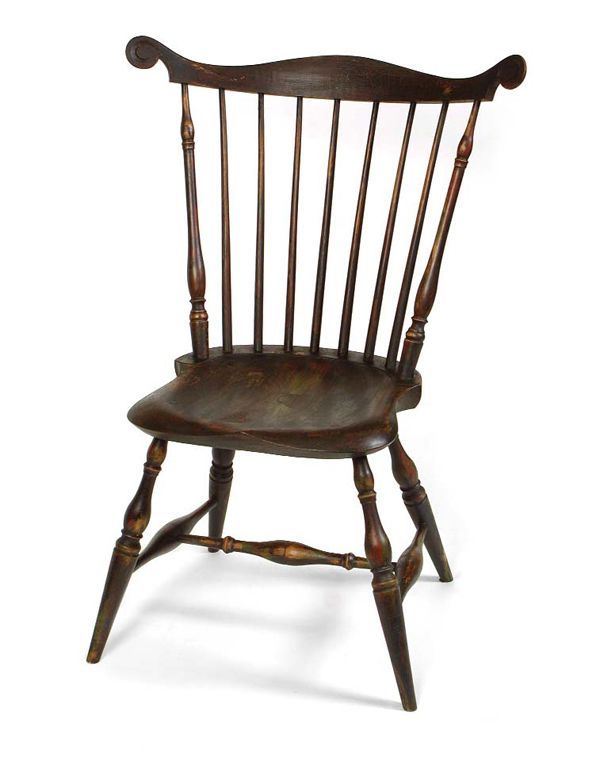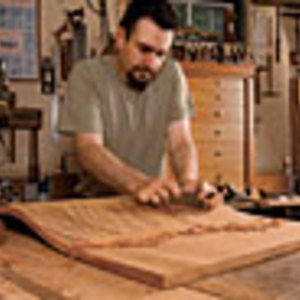
Synopsis: Dan Faia lays out a simple procedure for duplicating a 200-year-old painted finish in just a few days. His technique incorporates alternate layers of wax and milk paint, but it’s far from boring. The last step is pretty dramatic: It involves setting your finish on fire.
From Fine Woodworking #172
Duplicating a 200-hundred-year-old painted finish is a goal for many woodworkers, but the obstacles can seem overwhelming. Many antiques have several coats of paint, often of different colors, because period furniture was updated to follow the fashion of the times: A typical Windsor chair of the 1790s generally would have been painted green; in the Federal period it may have been repainted red or white; while from Victorian times onward, black was the color of choice. Then there is the problem of matching 18th-century lead paints, with their imperfect tones and subtle color differences. Finally, the paint must have a weathered and oxidized appearance with marks from generations of use and abuse.
The dilemma is how to create all of this history via a reasonably simple procedure. The process I follow can transform a project in a few hours from raw wood to an antique ready for use.
Sand the wood, then dye it: A painted finish needs far less surface preparation than a clear finish. First, make sure all of the excess glue has been removed, then lightly sand the surface with 150-grit paper.
Apply a brown, water-based aniline dye to all surfaces, including the underside of the seat. Adjust the strength of the dye to match your color preference. The maple legs and stretchers, the pine seat, and the oak spindles absorb the dye to different degrees, highlighting the diversity of the woods used in a Windsor chair. However, because most of the surfaces will be painted, the mismatch will not be noticeable.
Alternate layers of wax and milk paint: Next, consider where the piece will receive the most wear. A table has heavier wear on the edges of the top. A stool’s stretchers are a natural resting place for shoes, while a chair’s seat and crest rail show the most wear. Sit in the chair, and see what your body does. Look at where your shoulders hit and your feet end up. These are the main places where layers of paint are worn away. To achieve a worn look, generously apply paste wax to these areas.
For the full article, download the PDF below:
Fine Woodworking Recommended Products

Jorgensen 6 inch Bar Clamp Set, 4 Pack


Waterlox Original























Log in or create an account to post a comment.
Sign up Log in